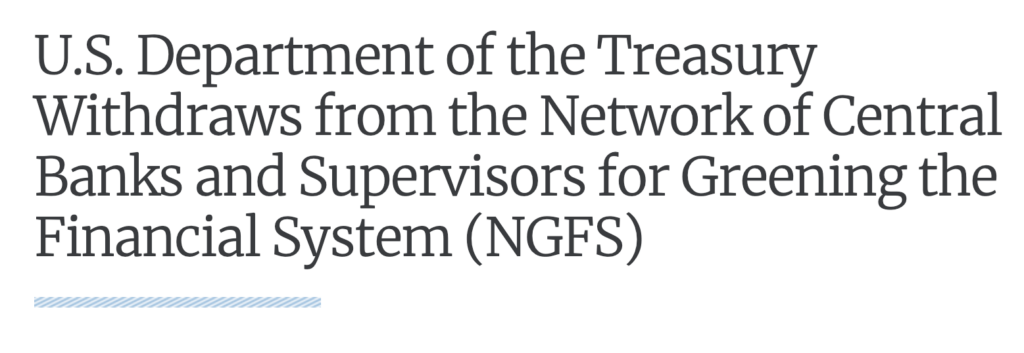Treasury Withdrawal: A Step Toward NESARA?
January 30, 2025
Is the Treasury Withdrawal from the NGFS a Prelude to NESARA?
On January 30, 2025, the U.S. Department of the Treasury announced its withdrawal from the Network of Central Banks and Supervisors for Greening the Financial System (NGFS). While this decision appears to focus on climate finance, some speculate it could be part of a larger plan to restructure the global financial system.
The NGFS is a coalition aimed at promoting sustainable finance, often in alignment with international policies influenced by global institutions. Critics have argued that such networks concentrate control over national economies. The recent withdrawal may indicate a shift towards financial sovereignty, potentially signaling broader changes in monetary policy.
A Connection to NESARA?
For those aware of NESARA (National Economic Security and Reformation Act) theories, this development raises intriguing possibilities. NESARA allegedly involves a massive economic overhaul, including debt forgiveness, the dissolution of central banking monopolies, and a return to asset-backed currency.
Could the Treasury’s departure from this international network reflect steps towards reclaiming control over the U.S. financial system? Some speculate that this might be a soft rollout of reforms tied to NESARA, facilitated by efforts to dismantle globalist influence on monetary policy. The rumored involvement of figures like Donald Trump in taking down so-called “Deep State” actors further fuels these theories.
Signs of Financial Reform
Recent moves such as reducing reliance on the Federal Reserve, exploring new currency standards, or distancing the U.S. from global financial coalitions might align with NESARA’s principles. However, it’s crucial to approach these claims with caution. There has been no official confirmation of NESARA’s existence or implementation.
Final Thoughts
Whether or not this marks the beginning of NESARA’s rollout, it underscores a shift in how the U.S. Treasury approaches international finance. Observers should continue monitoring developments in U.S. monetary policy for further signs of change.
Disclaimer:
This blog post explores speculative connections. Readers are encouraged to conduct their own research and verify information independently.



